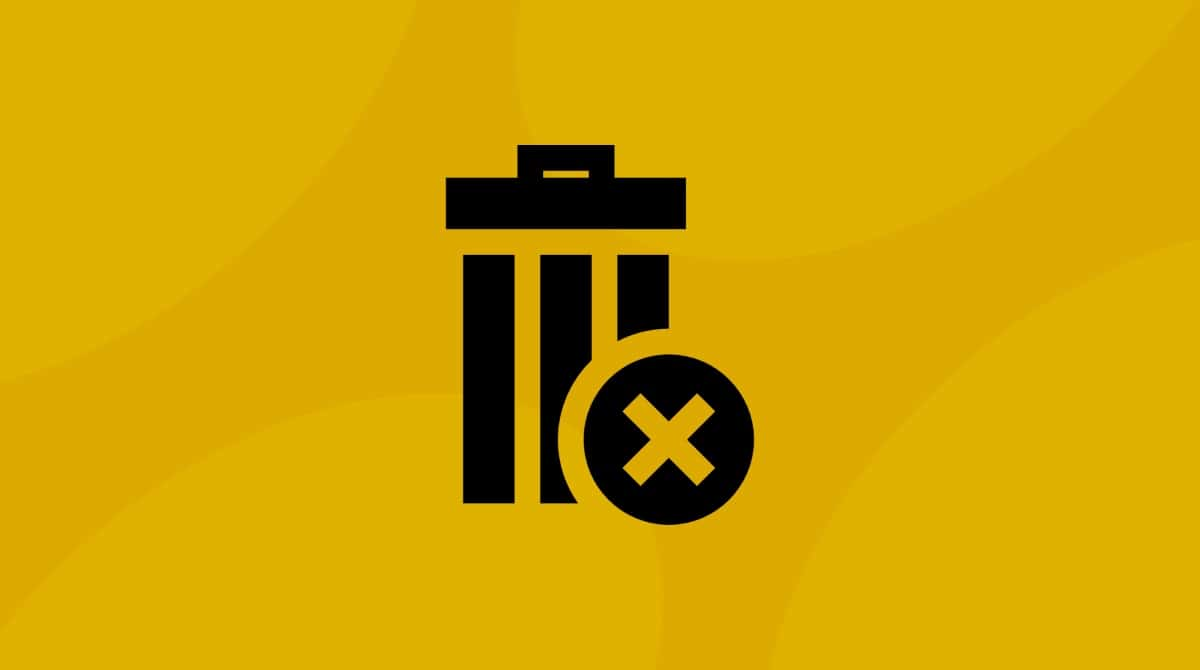There are many email clients available for the Mac, and if you use a third-party app, such as Outlook, Spark, or Edison, you may have decided you don’t need Apple’s Mail app. So, how do you uninstall it from your Mac?
The good news is that it is not troublesome to delete the Mail app. The bad news is that it comes preinstalled when you buy a Mac or upgrade the OS. Thus, it’s protected by the system. That means you can’t remove it as easily as a regular third-party app; instead, you’ll have to go through a few extra steps. Let us show you how to delete Mail app on Mac.
Why uninstall the Mail app on your Mac?
Most people want to disable the Mail app or remove it because of the storage space it takes up. If you’ve used the Storage tab in About This Mac (Apple menu > About This Mac > More Info > Storage Settings) to manage storage, you may have noticed Mail taking up several gigabytes of precious SSD storage. Most likely, it is occupied by attachments. So, if you get rid of those, you may find that you don’t have to uninstall Mail after all.
While you can delete attachments manually, it’s a complex process. The most effortless way is to use a specialist tool, such as CleanMyMac.
CleanMyMac has a tool that scans your Mac and identifies mail attachments in the Mail and other email clients on your computer. Delete all the attachments with one click: PDFs, images, documents, and things like company logos embedded in signatures, etc. Here’s how to use it:
- Start your free CleanMyMac trial to delete Mail attachments with a single click.
- From the sidebar, navigate to Cleanup.
- Click Scan > Review All Junk > Mail Attachments.
- If your mail stores excess local data, you’ll see the list of what can be deleted and the Clean Up button.
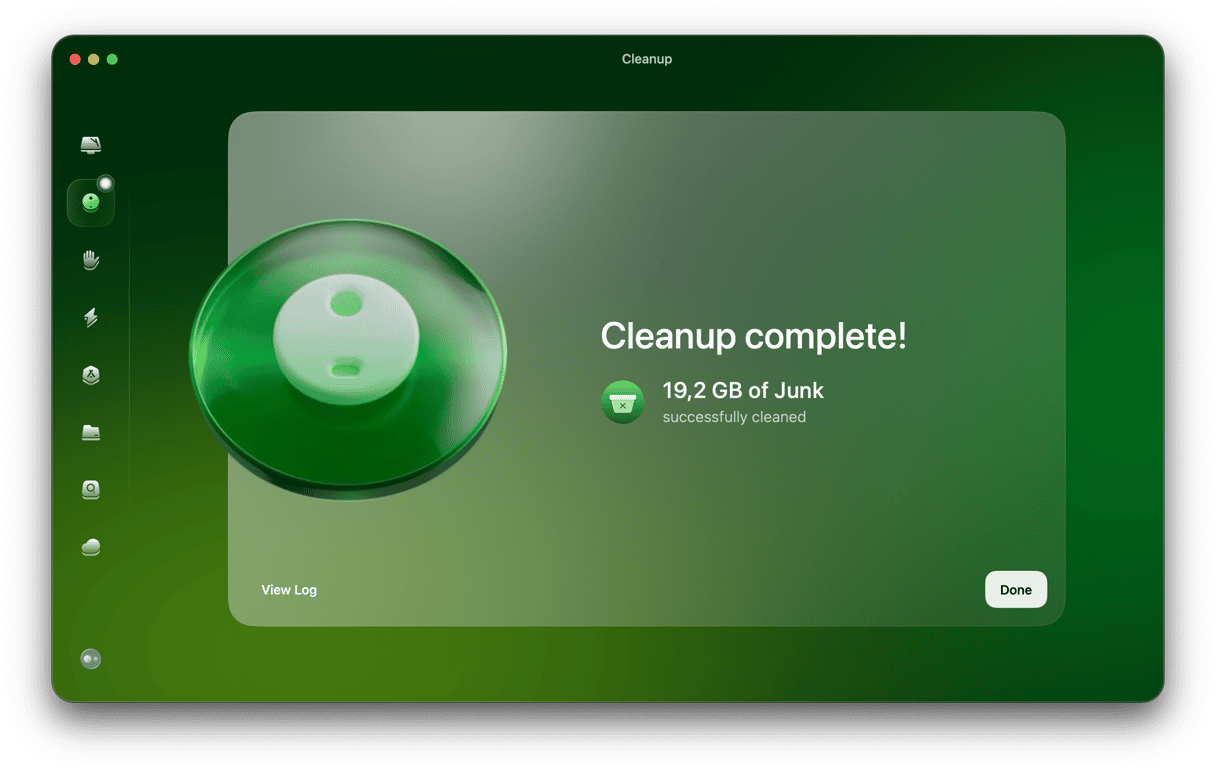
Can you delete Mail app on Mac?
As we said in the introduction, Mail is protected. The part of macOS that provides that protection is called System Integrity Protection (SIP). However, it is still possible to remove the app, but you will have to disable SIP. We’ll show you how below.
How to delete Mail application on Mac
1. Disable SIP
To uninstall Mail, we first need to disable SIP temporarily. And to do that, we need to restart in recovery mode.
How to restart an Intel Mac in recovery mode:
- Shut down your Mac.
- Press the power button and hold Command-R.
- Wait for the Apple logo to appear and release Command-R.
- You should eventually see the macOS Utilities window.
Once your Mac has started up in recovery mode, now we can disable SIP on Mac:
- Select Utilities from the Applications folder and open Terminal.
- Type the following command:
csrutil disable - Press Return.
- Reboot Mac.
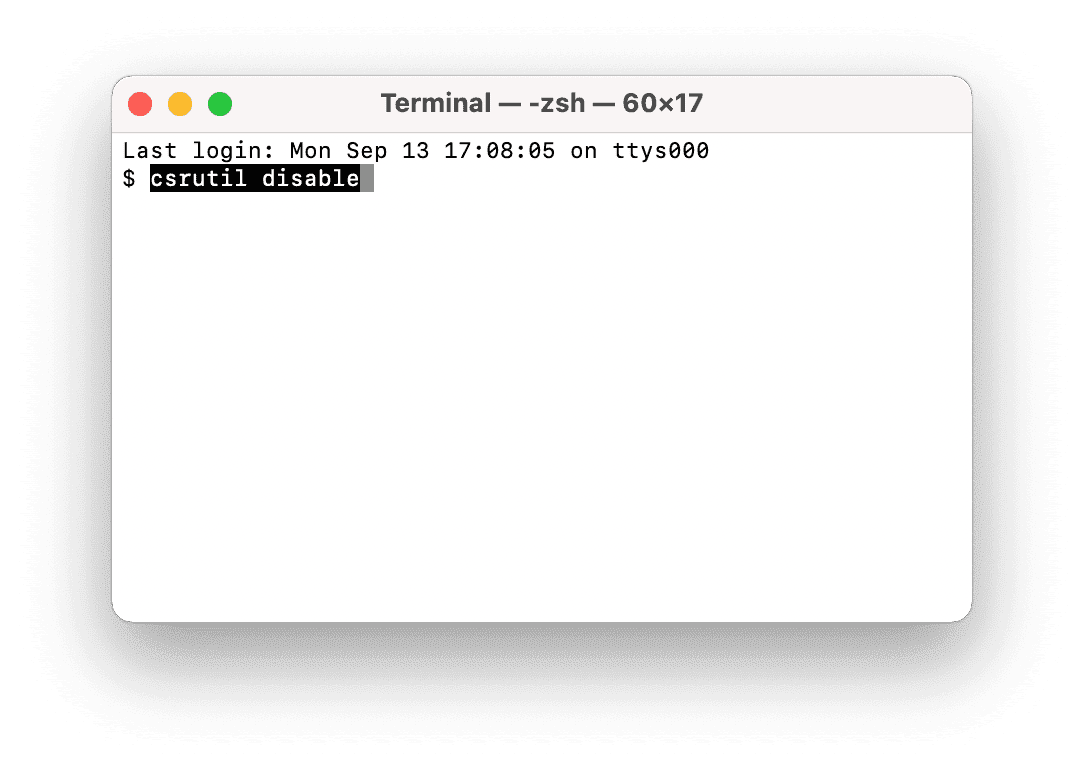
How to restart a Mac with Apple silicon in recovery mode
- Shut down your Mac.
- Press and hold the power button (Touch ID).
- Keep holding the power button until you see the startup options.
- Click Options, then click Continue.
- Enter your admin password, then click Continue.
Next, here’s how to disable SIP:
- Go to Utilities > Terminal.
- Type in the following command:
csrutil disable - Type Y and press Return to confirm. Then, enter your admin password.
- Quit Terminal and restart Mac.
2. Remove Mail app
SIP is now disabled, and you can go ahead and uninstall Mail. To do that, we need to use Terminal again:
- Go to Applications > Utilities and open Terminal.
- Type
sudo rm -rf /Applications/Mail.app— this command will delete Mail app. - Press Return.
- Type in your password.
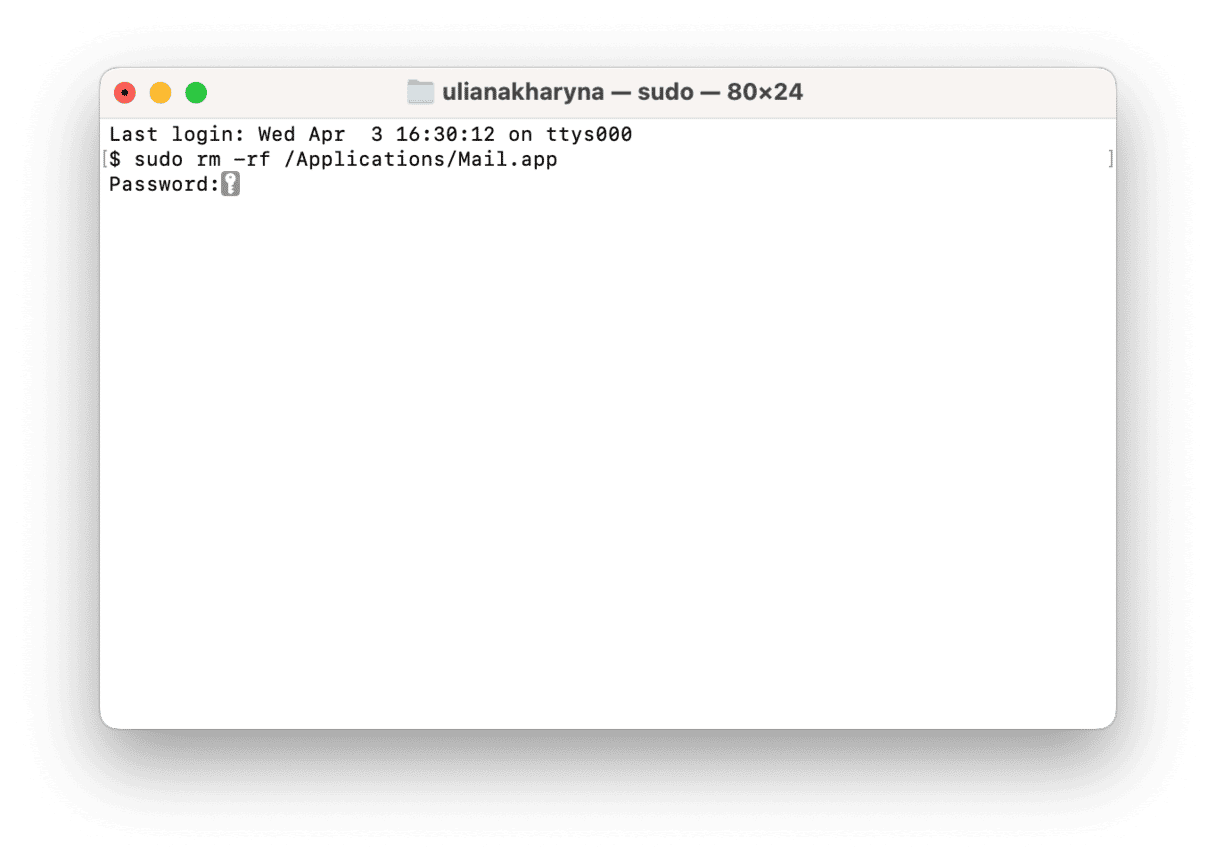
3. Enable SIP
The Mail app has now been removed from your Mac. There is one more step, however. We need to re-enable SIP. To do that, do the following:
- Boot your Mac in recovery mode as described abi
- Choose Terminal from the Utilities menu.
- Type:
csrutil enable - Press Return.
- Reboot your Mac.
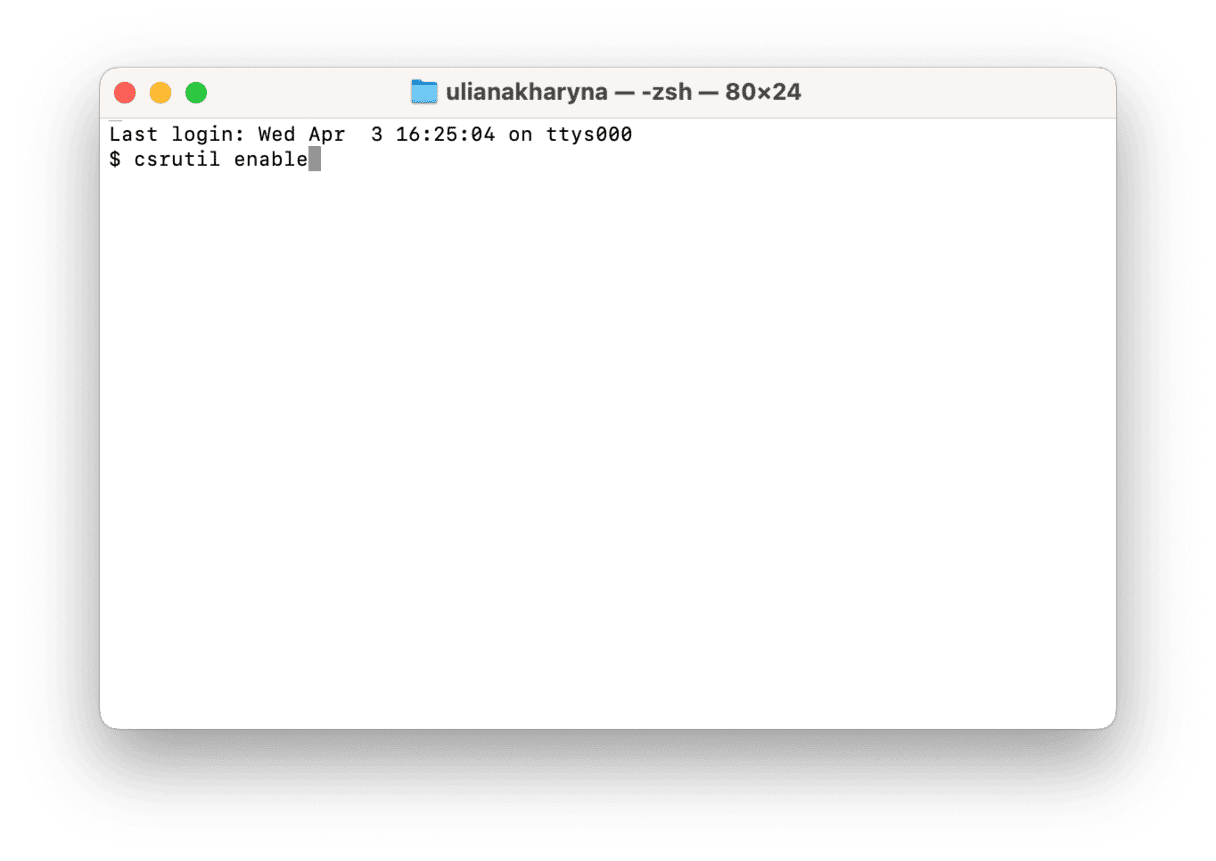
How to reinstall the Mail app
Once you’ve deleted the Mail app, there’s no easy way to reinstall it. You would have to restart your Mac in recovery mode (as described above). You would then have to choose the option to reinstall macOS. You should back up your Mac before doing this, as it will wipe all your data.
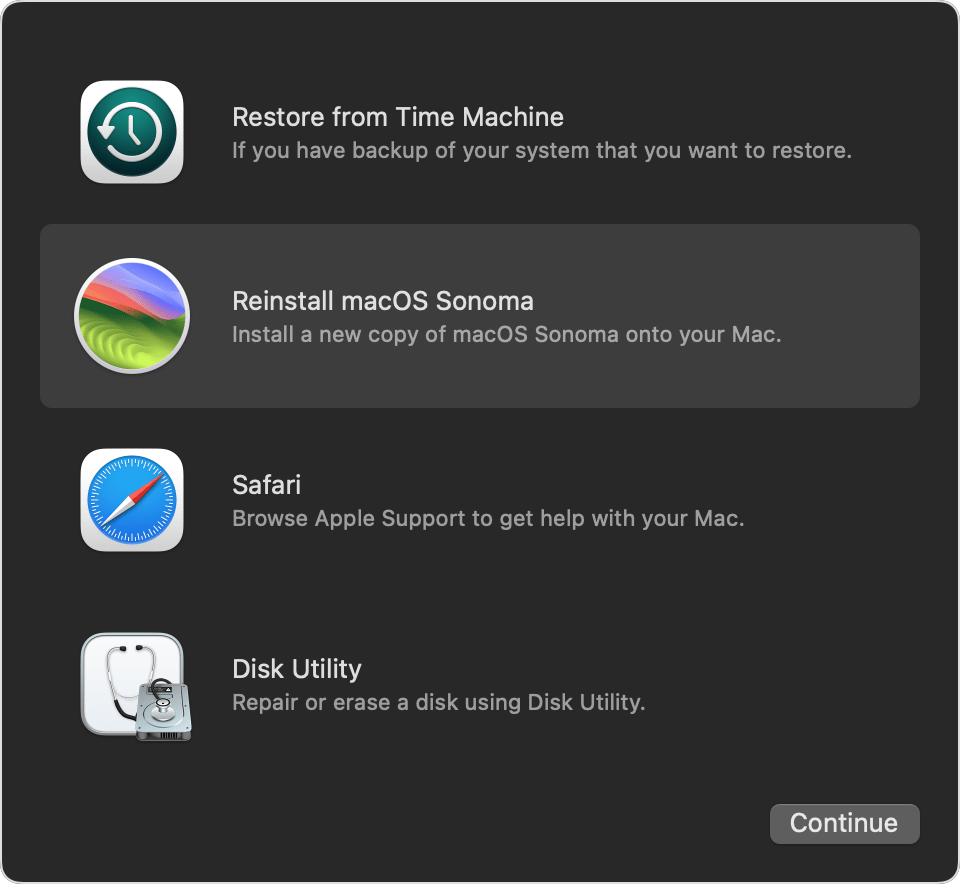
How to keep Mail but save storage space
If you want to free up storage on your Mac but don’t want to delete Mail, you can do a few other things besides using CleanMyMac to delete attachments.
1. Change junk and deleted message settings
You can specify if and when Mail gets rid of messages you delete in the app or label them as junk in Settings. If you set it to remove these messages quickly, say within a week, that should free up space.
_1650355685.png)
Go to Mail > Settings > Accounts and click on an account. Choose Mailbox Behaviors. Click on the menu beneath ‘Erase junk messages:’ and choose an option. Do the same with the menu beneath ‘Erase deleted messages.’
2. Prevent Mail from downloading attachments
By default, Mail downloads attachments when it retrieves a message from the server. These attachments are stored on your Mac. However, you can tell Mail to leave the attachment on the server, and you can then choose when to download it.
In Mail Settings > Accounts, choose Account Information. Set ‘Download attachments’ to None.
_1650355727.png)
3. Disable the Mail app
If you use another email client and never want to use Mail, removing accounts will stop it from retrieving messages from the server.
Click on the Apple menu and choose System Settings, then Internet Accounts. Locate the accounts you currently use in Mail, select them one at a time, and disable ‘Mail.’
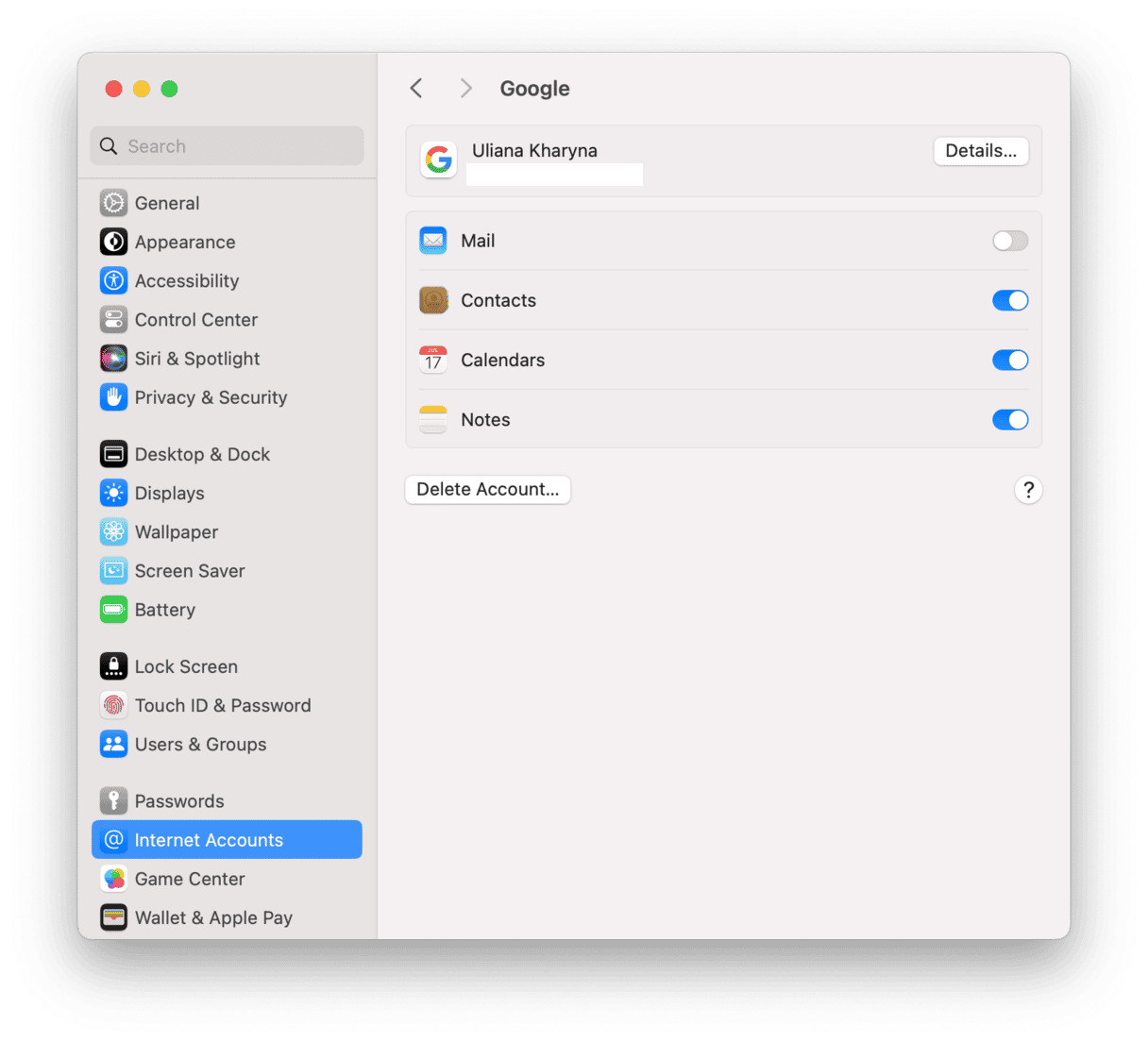
How to reset the Mail app
If Mail is causing problems, there is one thing you can try instead of deleting it — reset it. Reset means deleting all app-related files, so when you open an app again, it will look as if you’ve just installed it. You can try to hunt down all these files manually, but there’s a risk of missing something, not to mention the possibility of deleting some files vital for the proper functioning of macOS.
There is an alternative, though — using CleanMyMac and its Applications tool. It comes with a feature that can reset your apps, including preinstalled ones like Mail, by finding and removing app-related files that can be safely deleted. This way, it ensures a clean reset.
- Open CleanMyMac.
- Click the CleanMyMac menu and choose Settings.
- Select the Ignore List tab > Uninstaller. Deselect the box ‘Ignore system applications.’
- Select Applications in the sidebar of CleanMyMac.
- Run a scan and click Manage My Applications > Uninstaller.
- Click > next to Mail, select everything except Binaries, and click Remove.
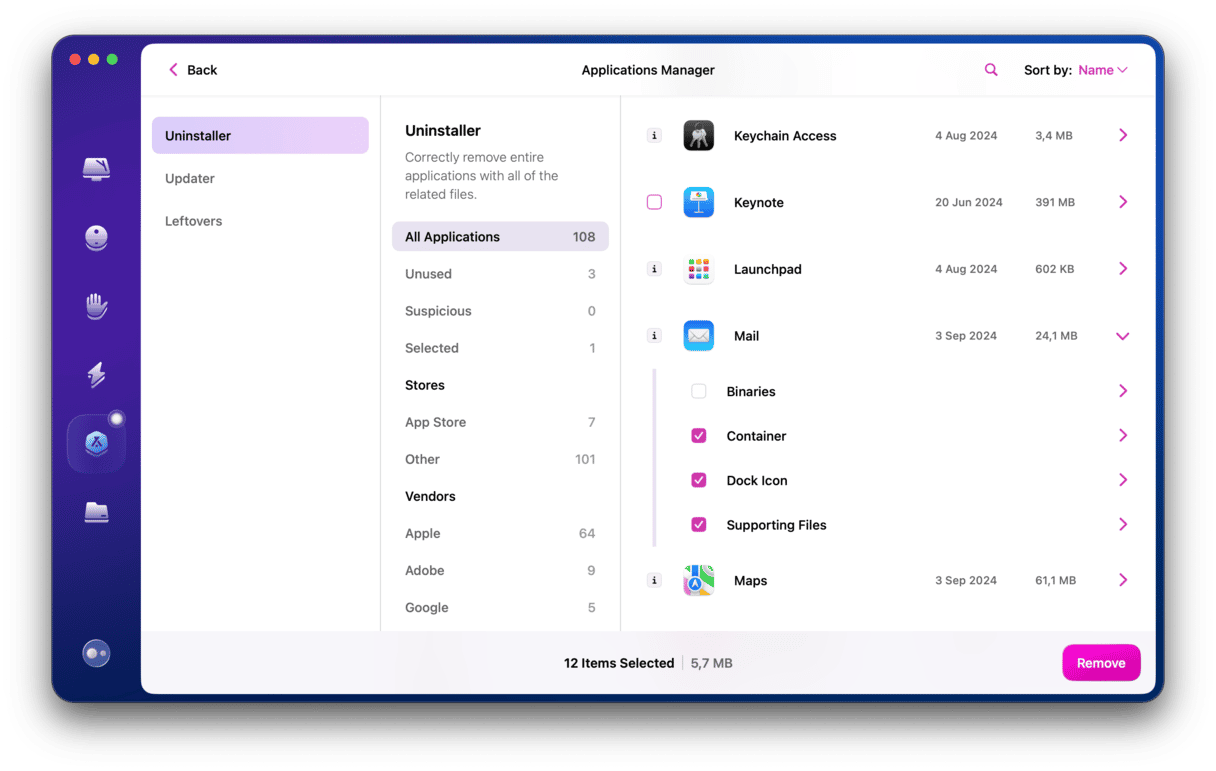
Mail will now be reset and restored to its original state. You can also get rid of unused apps without worrying about any leftover files. Just select an app and click Uninstall. Easy!
How to remove email accounts in Mail on Mac
You don’t necessarily have to remove Mail app; instead, you can remove email accounts. This way, all of your messages will be deleted on Mac. However, their copies will still be stored on mail servers.
- From the Mail, open Settings.
- Navigate to Accounts.
- Select the account you want to remove and click —.
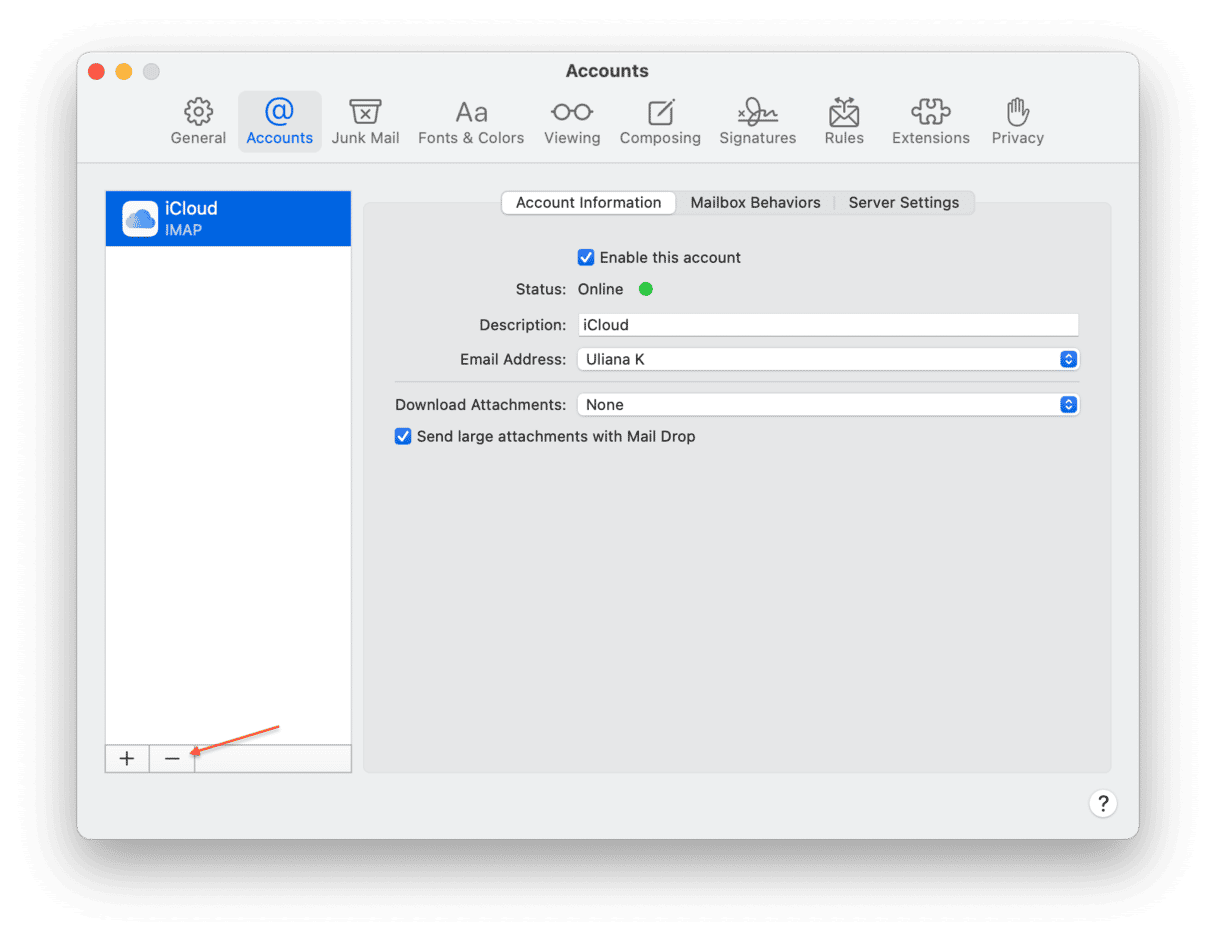
Mail is protected by SIP because it’s a core app in macOS. You can delete it by temporarily disabling SIP and using Terminal to remove Mail. To do that, follow the instructions above. However, if your reason for deleting Mail is to free up space, there are several other, much less drastic options.







